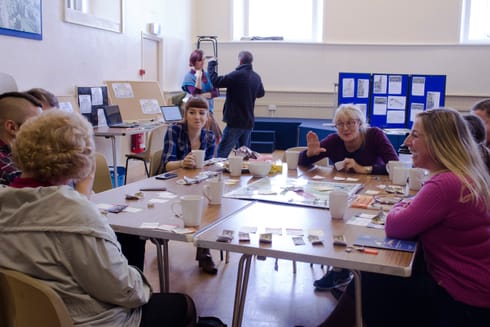
Social media and portable digital technologies have become a part of our everyday lives. Whilst this is also true for charities, small and medium-sized charities often struggle to get started with their digital presence. Amidst all of the actual work they do, it can seem hard to know where to get started with this - and to know what digital technologies will make a difference for the people they work with.
Working with a medium-sized charity that provides youth and social work services to care-experienced young people, in this project I explored how websites and social media presences could be designed in a participatory way. A lot of design methods claim to be participatory, but they can have a really limited frame of what they consider to be 'participation'. Is it participation if one person comments on a design? What about three? Ten? Is it participation if they feedback on something that already exists, or do people need to be involved earlier in the process?
I adapted existing user-experience design and research methods and interrogated their ideas of participation. Given a certain method, to what extent can a person involved in the method actually change the outcomes of it? Are people just treated as resources for data, or can we develop ways to make this design process more meaningful?
The project found that traditional design methods are often focused on limiting participants' agency and power, giving them access to the overall design process in only limited and discrete ways.
Making new(?) methods
As part of this project I developed a set of methods for use in user-experience design processes which are structured around maximising the possibility of participation - in whatever form someone needs. Solar Systems is a method for eliciting people's understandings of a given concept and the values and attitudes that they attach to that. It allows groups to hone in on specific areas they care about and begin thinking about different aspects of this. (resources forthcoming)
I used the future-focused methods that I began working on in Exploring Digital Peer Support again in this project, refining some of how they work and adapting them to this new context. I worked on these further in It's Our Future, so for the most up-to-date version of this method, head there. (resources forthcoming)
I also used participatory paper prototyping as part of this project. Traditionally paper prototyping is just used to test interactions, but in this project I used it as a way to help non-expert users be able to design website interfaces with relative ease. I made a paper-based block system (similar to block-based website editors), which participants used as a way to demarcate different types of content. Whilst this isn't necessarily something new, you can find resources on how I went about this here. (resources forthcoming).

